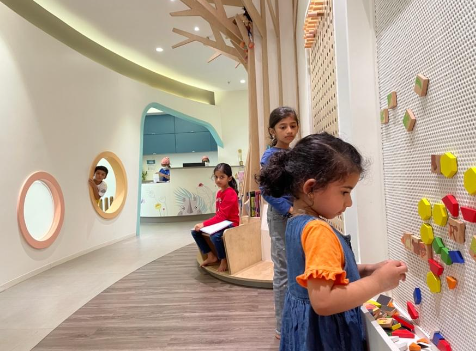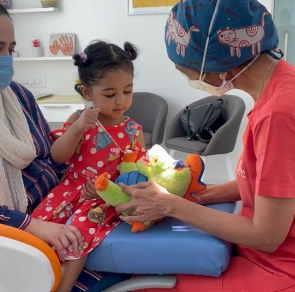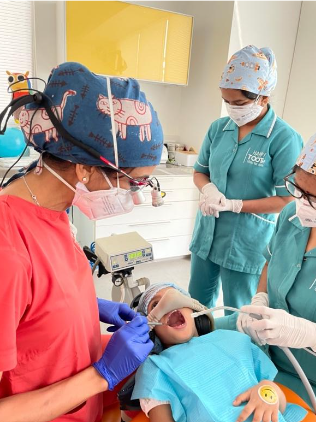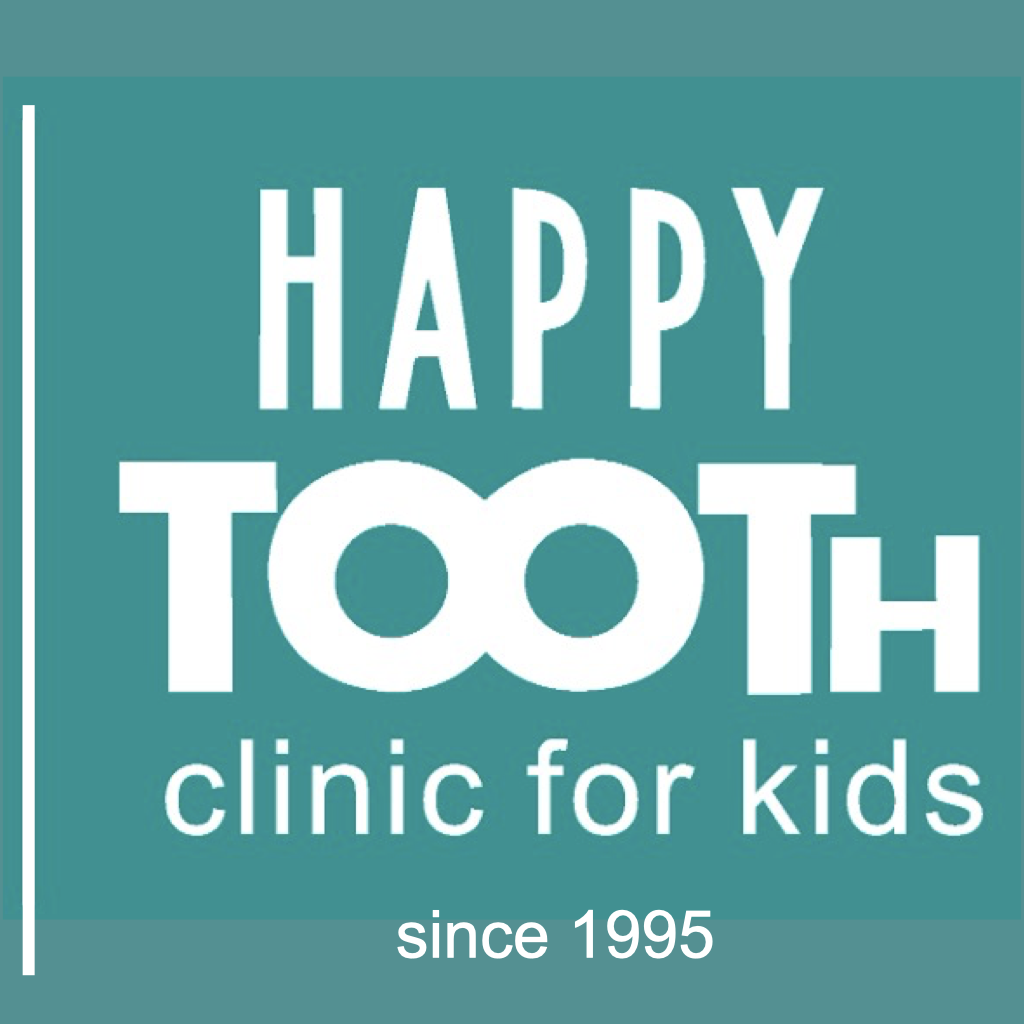We want to protect our children from that which we fear the most. And what we fear as adults is often defined by our experiences growing up.
Dentistry in the past was not what it is today and many of us would rather forget our childhood visits to the dentist. For others amongst us who never visited a dentist as kids, our idea of ‘the dental visit’ is shaped by popular imagery which may not be reassuring. Many adults continue to dread dental visits and avoid them, to their own detriment. If you recall your childhood dental visits with anxiety or even fear, what I am sharing is especially for you. After all, what parent wouldn’t want their child to have a pleasant and even happy experience at the dentist?
WHY IS DENTISTRY DIFFERENT?
I will draw a comparison between a child’s visit to their pediatrician & a visit to the pediatric dentist. Check out the difference.
Your child’s visit to the pediatrician may involve a vaccination (injection). In an anxious child, this unpleasant task can be accomplished by explaining to your kid that the vaccine keeps them healthy & strong. Following this preparation, restraining your child gently but firmly helps conclude the event with some tears. If they are upset after, you distract them for a while. Both of you then go about the rest of your day, the actual process only took a few moments.
Dental procedures on the other hand are surgical techniques that have to be performed with finesse in little mouths. The child is usually awake and alert. If the procedure requires a local anesthetic, that is only the beginning of the treatment to follow. The injection is ‘Laying the grounds, so to speak. Coping with it all can be extremely challenging for many children. Barring a few situations, very little can be achieved under restraint or force. And we do not want to traumatize children, a certainty when we force treatment on them.
Almost always, dentistry requires your child to voluntarily cooperate on the dental chair. And treatment procedures take time. Therein lies the difference.
WHAT COULD BE GOING ON IN YOUR CHILD’S MIND?
- Little children are often fearful of the unknown. An unfamiliar place and unknown people can make many children uncomfortable.
- Their mouth is a private and sensitive part of their bodies, and a simple dental examination may feel like a traumatic intrusion.
- If a child’s association with health care professionals has been unpleasant this far, their association with dentistry may be negatively impacted too.
- Dental procedures can be demanding to cope with. The noise, the vibration, water flooding the mouth, and the feeling of numbness can overwhelm children.
All of this can impact how a child responds to the dental environment.
HOW HAS DENTISTRY CHANGED?
Fortunately, dental science has progressed extensively over the years.
- Our children can now benefit from superior knowledge and techniques.
- Contemporary dental materials and technology enable us to provide safe, pleasant, and effective treatment with minimal pain and discomfort. And we have the advantage of access to the best in a city like Mumbai.
- Pediatric dental practices with their warm, child-friendly, and reassuring environments are unlike dental practices most adults were exposed to as kids.
- Our deeper understanding of child psychology and parenting has made us more empathetic as healthcare professionals. This has allowed us to support parents and children better in the child’s oral health care journey.

WHAT TECHNIQUES DO PEDIATRIC DENTISTS USE TO MAKE YOUR CHILD COMFORTABLE?
We believe that we have succeeded at our jobs when our child patient receives age-appropriate, evidence-based, quality dental care. Our priority as we deliver care is to make the dental experience comfortable, thus helping your child develop a healthy outlook to dental treatment and oral care. Pediatric dentists predict and guide behavior in children with age-appropriate techniques. This helps anxious children cope with dental treatment more easily. Here are some of the tricks of our trade!
BEHAVIOUR GUIDANCE TECHNIQUES:
Reading a child’s body language and communicating effectively is the key to creating a happy dental experience.

We use the Tell-Show-Do technique to help children get comfortable with the first examination and with simple dental procedures. We tell the child what we plan to do and show them how we will do it. Animal puppets and role play help younger children feel safe and warm up to the procedure. With older kids, a conversation about what we plan to do and a demonstration on the palm of the hand (if they are fearful) usually does the trick. Once they know what to expect, most children are comfortable with cooperating for simple dental procedures. We always perform the task, the ‘Do’ component, as promised.
We may use the Ask-Tell-Ask technique in older kids who clearly walk in with numerous questions writ large on their worried faces. An empathetic person who finds their fears reasonable and is willing to address them is usually calming for most children.
We always use positive reinforcement and descriptive praise when children make an effort to cooperate. Verbal distraction and audio-visual aids come in handy. We also use desensitization by exposing children gradually to more demanding treatment procedures in a phased manner.
HAPPY GAS & MINIMAL SEDATION:
The behaviour guidance techniques that we use enable us to obtain the cooperation of most children who are fearful and reluctant. However coping voluntarily for dental treatment can be demanding on most children. How they will cooperate also depends on the extent and complexity of the procedure they need.
The use of Happy Gas or Nitrous Oxide Oxygen Inhalation Sedation, for the delivery of comfortable and efficient dental care is now considered ‘gold standard’ in pediatric dentistry.

In this Safe and Child-friendly form of minimal sedation, your child breathes Happy or Sweet Gas (a combination of nitrous oxide and oxygen) during treatment. The percentage combination of gas is titrated depending on the demands of the treatment procedure and the anxiety levels of the child.
A small mask called the nasal hood is placed on the nose through which the child breathes normally. Happy gas helps children feel calm and relaxed during dental treatment, making all sensory stimuli easier to cope with. The proven safety of this sedation technique also ensures the child leaves the practice straight after treatment, ready to pursue the rest of the day’s routine.
Most children can undergo treatment under inhalation sedation if they are old enough to accept a mask on their noses. Obviously, a blocked nose because of a common cold will not help. But once that is out of the way, happy gas allows for good quality dentistry and happy smiles!
MIDAZOLAM ORAL SEDATION: Toddlers and some older children may not be cooperative and accept a nasal hood, breathe quietly through their nose and allow us to work in their mouths. To help them stay calm and relaxed for simple treatment procedures, we give the child a drink of a small dose of midazolam. The child is awake but not alert and anxious. While oral midazolam sedation works well in many children, some may continue to remain cranky through the procedure. However, they do not have a negative memory of the treatment. Most kids will wish us goodbye with joyful smiles!
GENERAL ANAESTHESIA: Children requiring extensive dental treatment and many children with neurodiversity, disabilities, and special health care needs benefit greatly from dental rehabilitation under general anesthesia. The treatment needs outweigh the child’s ability to cooperate voluntarily for complex dental procedures. Pediatric dentists are trained to provide dental treatment under general anesthesia and this is best performed in a hospital based operation theatre under the expert care of an anaesthesiologist. These are day care procedures and the family can return to the comfort of their homes, four hours after treatment.
NEURODIVERSITIES & DISABILITIES
Many children with medical, physical, developmental and cognitive disability will find undergoing dental treatment extremely challenging. As pediatric dentists, we receive advanced training that focuses on care for children with physical, medical and cognitive disabilities. We modify and deliver treatment plans to suit the specific needs of every child. Since cooperation for operative procedures (drilling and filling) can be difficult for many children, minimally invasive techniques such as the use of Silver Diamine Fluoride (SDF) and Hand Burs are invaluable adjuncts. While some children with special needs may cooperate with Behaviour Management Techniques, for more complicated procedures, many children would require treatment under General Anaesthesia.
WHAT CAN YOU DO AS A PARENT TO HELP?
Pleasant and reassuring dental experiences as a young child lead to a positive attitude to dental care through adulthood. Your kid’s initial visits are critical and as a parent, you can be instrumental in encouraging this optimistic outlook.
- While we understand that you are anxious about your child’s initial visits, try not to let your anxiety show. Your perceptive child will sense that you are worried and will presume that there is a reason for fear (where there is none). This can be a false start.
- Schedule your appointment at the time of day when your child is fresh and alert.
- Make a list of the questions you wish to ask and any concerns you may have. A ready list eases your mind.
- Prepare your child for their first visit to the dentist so there are no surprises. Let them look forward to a new experience that will excite them.
- Explain in an easy going manner, that the dentist will have a look at their teeth, count them, teach them how to keep teeth clean and perhaps even take some photographs of their teeth.
- This enables children to view their dental visit as an opportunity to meet some new people who want to help them stay healthy.
- For most children, this will be an interesting and even happy occasion.
Parents who visit the dentist are as much a part of the dental experience as the child. A well-informed, dentally aware and cooperative parent contributes greatly to the successful outcome of the child’s dental visit. Let’s strive to be that parent!

